Recently updated on May 8th, 2025 at 04:38 am
Norway is both vast and rich in contrasts, sprawling along the Scandinavian Peninsula and stretching high into the Arctic Circle to crown Northern Europe. And whether you’re ready to conquer mountains and glaciers on midnight-sun hikes, cruise the frozen north, photograph the aurora borealis, fjord-hop, dogsled or whale watch, this Nordic nation offers unique adventures all year round. Here, is everything you need to plan your ultimate trip to Norway at any time of year.
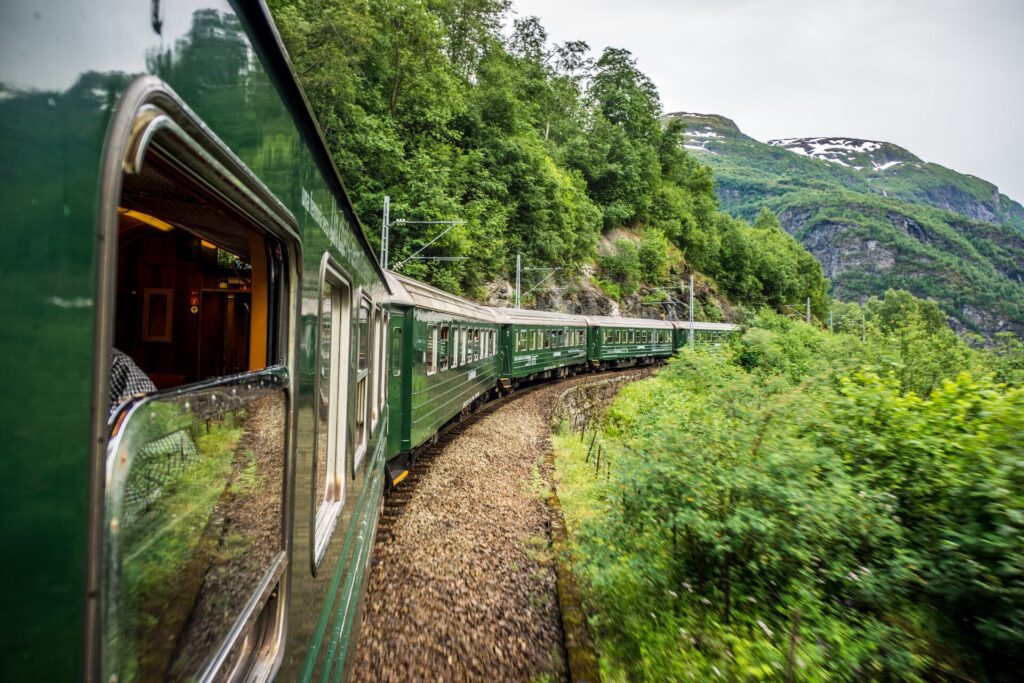

The Best Time to Visit Norway
With all four seasons bringing distinctly different temperatures, weather patterns and natural attractions, the best time to visit Norway depends on the best activities for you, and where you’d like to do them. Get your bearings with this handy map of Norway and bookmark the Norwegian Meteorological Institute’s page to stay in the know about current weather conditions by season and region.
Visiting Norway in summer (June to August)
In coastal areas like Bergen and Stavanger, summer brings some rainy days and average temperatures of 13–22°C. Meanwhile, Oslo – the capital of Norway – averages 15–22°C with sunshine and occasional showers. It’s cooler further north in Tromsø, where you can expect 9.5–15°C and a higher chance of cloud and rain.
- Midnight sun and long daylight hours
Along with golden days and mild temperatures, summer brings the midnight sun to Norway’s north and extended hours of daylight to other places. In the Svalbard archipelago – located between mainland Norway and the North Pole – the midnight sun shines from April 19 to August 23, while further south in Oslo, the midsummer sun generally sets around 10:30pm then rises just before 4am.
- Best outdoor activities
Wherever you venture, the continuous daylight from June to August means you can stay outside a lot longer, with this being the perfect season to hike, kayak and cruise Norway’s fjords. For wildlife, this is the best time to see walruses around Longyearbyen, take whale-watching cruises to see humpback, fin, blue and minke whales, and search for polar bears around Svalbard.
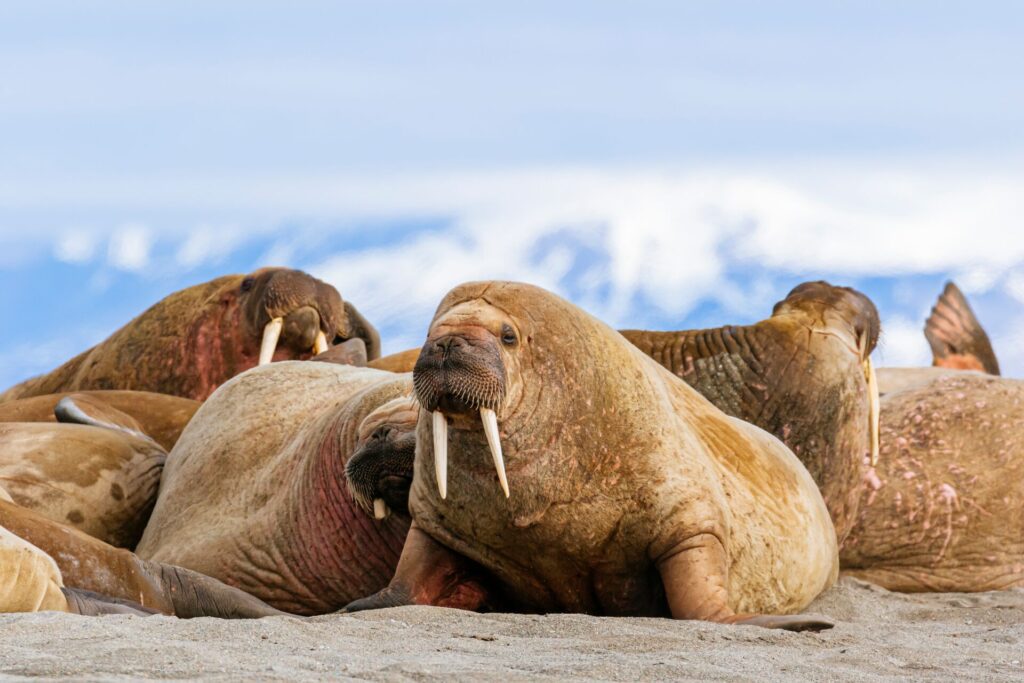

Visiting Norway in winter (December to February)
Norway’s winter climate varies significantly from region to region, but the average national temperature is -6.8°C. While the warming Gulf Stream keeps coastal Bergen and Stavanger a little milder at 1–4.5°C in January-February, Oslo and Trondheim receive significant snowfall and the mercury hovers between -4°C and -2°C. Northern regions inside the Arctic Circle, like Svalbard, can expect temperatures of -12°C to -16°C in January, and experience the polar night – when the sun stays below the horizon – with continuous darkness from the end of October until mid-February.
- Northern Lights season
With so many hours of darkness, winter is the perfect time to see Lady Aurora dance across the night sky, particularly in the Arctic regions like Tromsø, Svalbard and the Lofoten Islands. Kirkenes, which lies just beneath the auroral oval, reportedly enjoys around 200 aurora nights per year. To the south, Oslo may still have occasional aurora sightings during particularly active geomagnetic periods, but light pollution may dim your view.
- How to take advantage of the winter season
Rug up and go outside and play. This is the time to experience Norway at its icy best, with dog-sledding journeys, snowshoeing hikes, cross-country skiing, snowmobiling adventures, and cruises to see the frosty fjords flanked by frozen mountains.
Travelling from June to August? Our new Midnight Sun Svalbard journey unveils northern Norway’s iconic summer highlights with wildlife cruises, community visits, wilderness camps, and more.
Visiting Norway in spring (March to May)
As spring unfolds across Norway, the days start to warm up, daylight hours increase, and winter’s snowfall slowly melts. By March, the country’s south reaches around 12 hours of daylight, growing to 18 hours by May. In April, Oslo experiences an average temperature of 4.6°C, while Bergen’s slightly warmer with highs of 7°C, albeit with more rainfall. And it’s still quite cool above the Arctic Circle, with Tromsø averaging 1.7°C.
- Blooming landscapes and waterfalls
Spring’s big melt sees the mighty rivers swell to power-up spectacular waterfalls like Langfoss in Etne – which plunges 612m into Åkrafjorden. It’s also when you’ll see colour return to the land, with lush green foliage sprouting and spring flowers like apple, plum, cherry and pear blossoms blooming around southern Hardanger and beyond.
Visiting Norway in autumn (September to November)
As the slide towards winter begins, temperatures dip and daylight starts decreasing. In September, coastal cities like Bergen can expect average temperatures of 10–15°C, while in Tromsø it’s significantly cooler at 0°C–8°C. Rainfall varies across the country, but coastal regions will see more of it and the north has increased snowfall. By November, towns in the Arctic Circle receive only a few hours of daylight as the polar night approaches.
- Autumn colours and fewer crowds
Come September, Norway’s landscapes are blazing with colour as deciduous trees like birch, ash, rowan, and aspen unveil their autumn transition. The season’s an especially great time for nature hikes, photography, and fjord cruises through the UNESCO World Heritage-listed Geirangerfjord, where the fire-toned panoramas are reflected in the fjord’s clear waters. Plus, with summer’s influx of visitors long gone, there’s a real sense of serenity in the crisp air wherever you go.
Keen to see the Northern Lights? Our Authentic Fjords of Norway tour combines the best of cruising and land-based exploring to showcase the aurora borealis and the marvels of Bergen, Tromsø, and the North Cape.
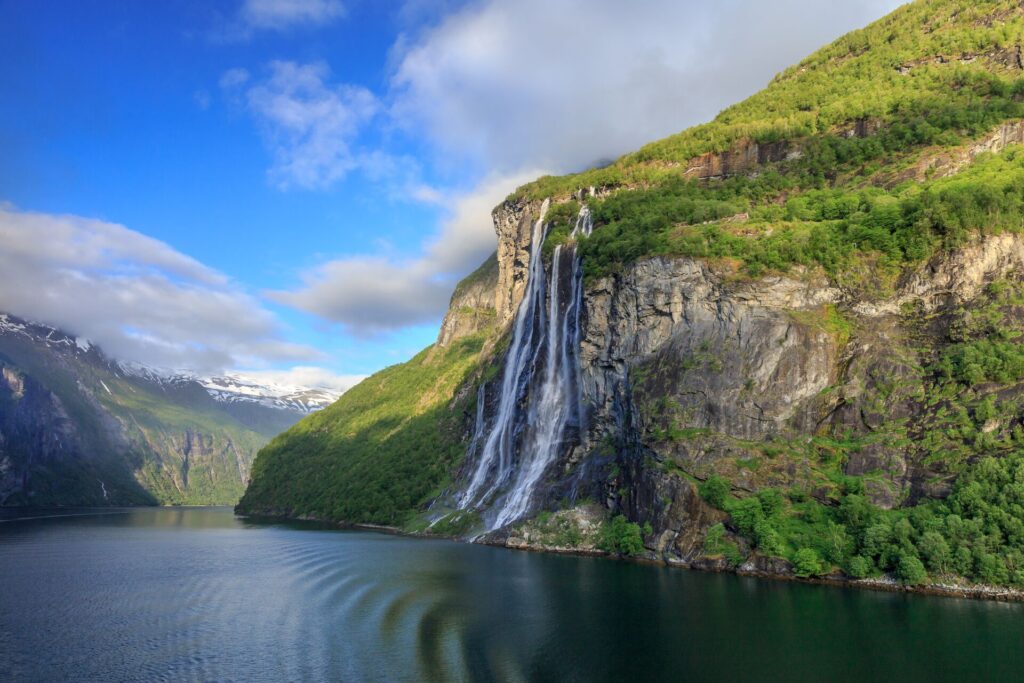

What to Do in Norway
Arts and culture vultures, wildlife lovers, outdoor thrill-seekers, Arctic adventurers, railway enthusiasts, fjord explorers and aurora hunters are all spoilt for choice in this year-round destination.
Explore Norway’s breathtaking fjords
With 28,953km of mainland coastline, Norway has more than its fair share of idyllic marine scenery – and while there are more than a thousand fjords to explore, Geirangerfjord, Nærøyfjord, and Sognefjord in the west are unmissable. Geirangerfjord is 15km long and brings the natural drama with otherworldly cliffs, towering waterfalls such as the Seven Sisters, hiking trails at Dalsnibba and Flydalsjuvet, and excellent cruising opportunities. Nærøyfjord is also UNESCO World Heritage-listed and one of Europe’s slimmest fjords (just 250m wide at its narrowest point), stretching 17km through steep cliffs, waterfalls, snow-capped mountains and sleepy villages. And Sognefjord is Norway’s deepest and longest fjord, connecting vibrant towns like Lærdal, Voss and Sogndal, and offering everything from glacier hikes at Jostedalsbreen to medieval stave churches.
Our tailor-made 13-day Norway’s Fjords & Scenic Rail tour explores by ship, road and rail from Oslo to the Arctic Circle.
Chase the northern lights in Tromsø & Lofoten
While the aurora borealis is visible in various spots during winter and the shoulder seasons, Tromsø and the Lofoten Islands are the places to be. With their remote locations above the Arctic Circle and proximity to the auroral oval (the region with the highest aurora activity), they offer some of Earth’s most reliable, extended Northern Lights viewing experiences, enhanced by their lack of light pollution and the darkness of the polar night. Memorable discoveries continue on the land, too. Tromsø’s highlights include boat tours, snowmobile safaris, the Fjellheisen cable car, Arctic Cathedral, Mack Brewery and the world’s northernmost aquarium, Polaria. A few hours’ drive south, the Lofoten archipelago also feels a little more remote, offering picture-perfect coastal scenery to frame the aurora, and dogsledding, snowshoeing and whale-watching adventures enhance your experience.
If seeing the Northern Lights tops your travel wish list, check out our ultimate aurora travel guide.
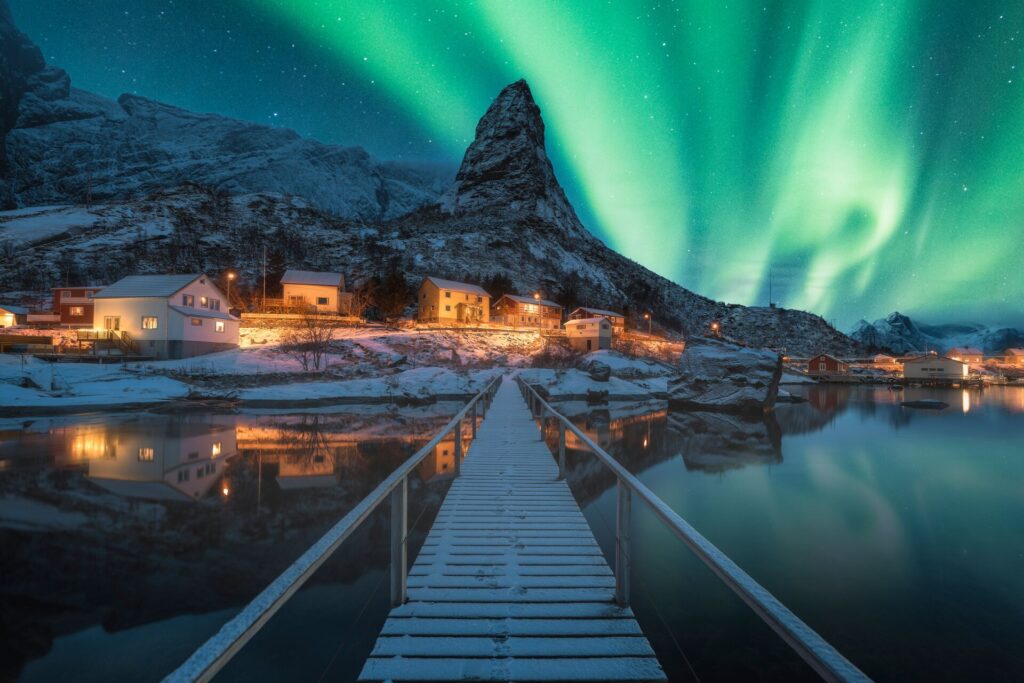

Take a scenic train journey in Flåm, Bergen & the Arctic Circle
Norway’s trains are renowned for their efficiency, sustainability and comfort, and a sightseeing rail journey is an immersion in epic scenery. The Flåm Railway line takes you from its namesake town on the banks of Aurlandsfjord and passes through lush valleys, steep cliffs and waterfalls enroute to Myrdal station; at 867m above sea level, it’s one of the world’s steepest standard-gauge railways. The Bergen Line runs between Norway’s capital city, Oslo, and Bergen in the Vestland coastal region, stretching nearly 500km across fjords, the Hardangervidda mountain plateau and Finse, which, perched at 1,222m, is the country’s highest station. And then there’s the Arctic Train, part of the country’s longest rail journey, the Nordland Railway. This route connects Trondheim and Bodø, crossing the Arctic Circle to showcase stellar views of northern Norway’s wild beauty spots, including the Saltfjellet mountains, vast fjords, and if you’re lucky, the Northern Lights.
Discover the vibrant cities of Oslo, Bergen & Trondheim
Norway’s cities parade the culture, history and outdoor lifestyle that make the Nordic nation so unique. At the head of the sparkling Oslofjord, Oslo is home to standout attractions like the National, Fram, and Edvard Munch museums; the architecturally ground-breaking Oslo Opera House, the 13th century Akershus Fortress, cross-country skiing areas, an engaging sculpture walk, and an eclectic lineup of music festivals including Inferno Metal and OverOslo. Bergen, on the west coast, is renowned for its colourful, World Heritage-listed Bryggen Wharf, lively fish markets, the Bergenhus Fortress, KODE Art Museums the Fløibanen funicular, Mount Fløyen, and the Bergenfest music festival. In Trondheim, you’ll find the world’s northernmost cathedral, the Stiftsgården royal residence, scenic forest trails and a packed calendar of events including the Soddjazz music festival and Matfestivalen’s foodie celebrations.
The fully customisable seven-day Norway in a Nutshell tour unveils the best of Western Norway’s fjords, mountains, cities and scenic rail journeys.
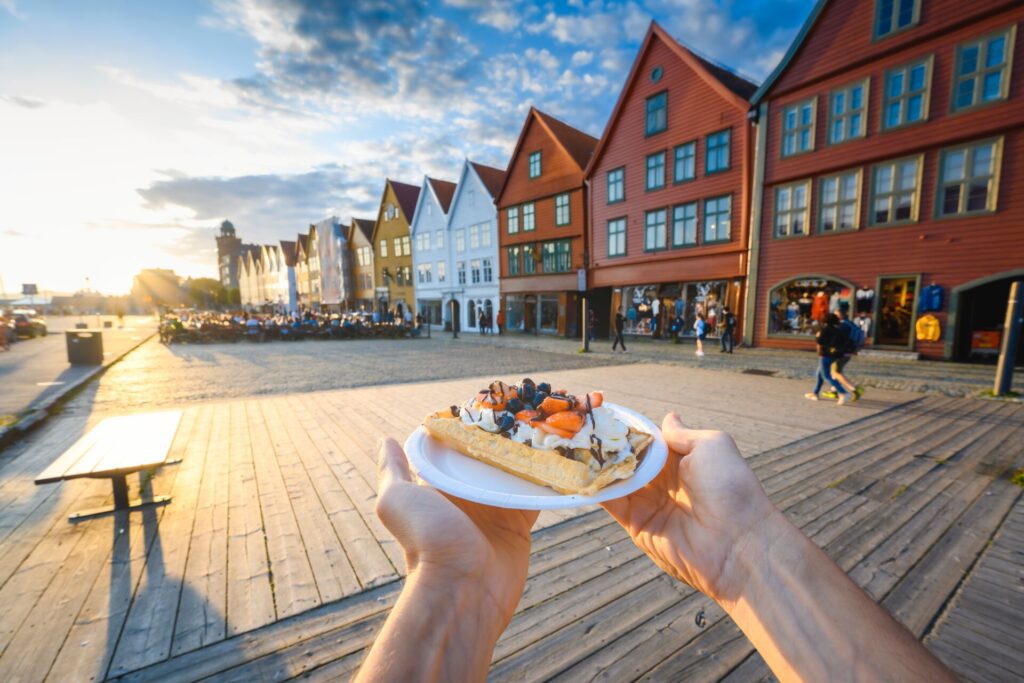

Adventure activities for thrill-seekers
Throughout the year, Norway also offers some of the planet’s very best hiking trails, kayaking adventures, dogsledding excursions and Arctic safaris. Lace up your hiking boots for the 4km round-trip to iconic Pulpit Rock (locally known as Preikestolen, near Stavanger); strap on your snowshoes to explore the Geirangerfjord region, or challenge yourself on the Romsdalseggen Ridge, where every glute-burning step is rewarded with panoramas over Åndalsnes and beyond. Hardangervidda National Park and Trolltunga are also trekking highlights; check out this list to find the best trails for you.
Prefer to let someone else do the legwork? Fire up your adrenaline with a dog-sledding excursion into the Arctic wilderness from Tromsø, where cultural experiences hosted by the Indigenous Sami people bring an extra layer of excitement. Guided kayaking tours, especially in the Lofoten Islands, Nærøyfjord and Geirangerfjord, bring access to waterways that are otherwise unreachable, while Arctic safaris in the north often involve snowmobiling experiences across glaciers, and opportunities to see wildlife like walruses, polar bears and caribou.
Road trips, cruises & coastal adventures
If you’re keen to hit the road, cruise through fjords and frosty seas beyond the Arctic Circle or set off on a coastal adventure that combines a hitlist of activities, there’s a bounty of highlights to choose from. On the mid-west coast, the Atlantic Road links Molde and Kristiansund via eight picture-perfect bridges, making for a short-but-awe-inspiring road trip over the thundering Norwegian Sea. Further north, the Lofoten Islands are connected by the E10 National Scenic Route, with road-trips here taking in World Heritage-listed Nusfjord, the picturesque village of Henningsvær, and noteworthy cultural attractions like the Lofoten Museum, Gallery Espolin and an annual Viking Festival.
For spectacular views of the land, sea, and vast skies lit by the aurora borealis or midnight sun, Adventure World’s partner, Hurtigruten, operates stellar Norway cruises all year round, including the North Cape Line route from Oslo to Honningsvåg, high above the Arctic Circle. There’s a range of itineraries and 34 ports to explore, including Geirangerfjord, Bergen, Bryggen, the Lofoten Islands and Tromsø, where you can enjoy a silent whale-watching experience to Make Travel Matter. Speak to our Destination Experts for more details about these exceptional Norway cruising experiences.
Our 12-night Authentic Svalbard journey combines an expedition cruise with land-based adventuring for a unique journey through Norway’s Arctic summer highlights.
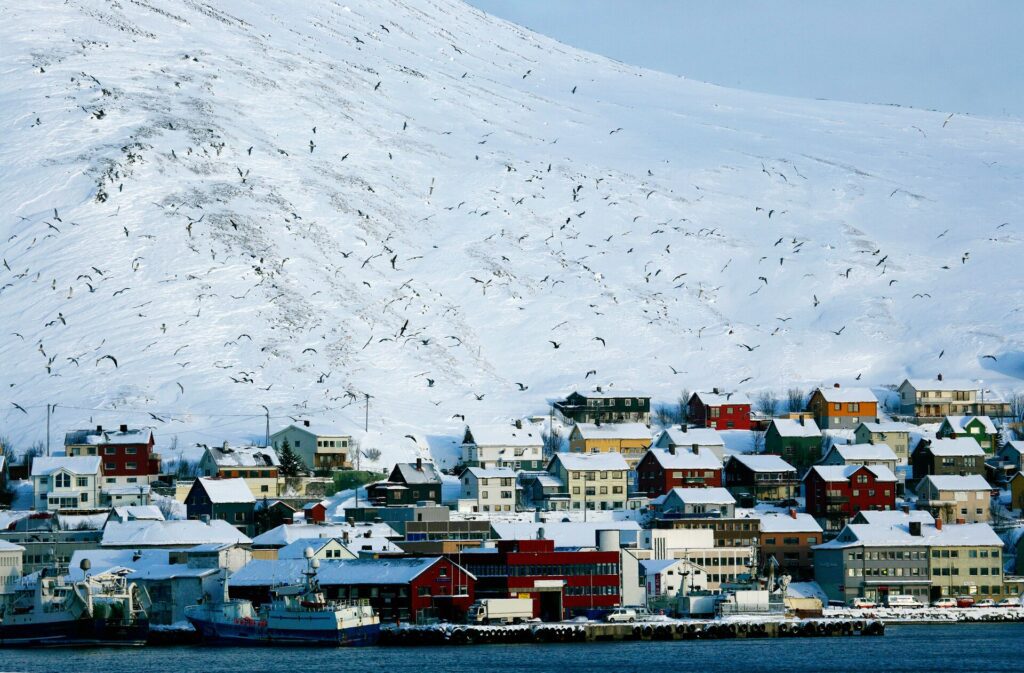

FAQs about travelling to Norway
Here are five essentials to know before you go…
How long should I spend in Norway?
You’ll need at least a week, but the longer you can stay, the more ground and sea you can cover. On a shorter trip you might stick with Oslo and Bergen, but if you have seven to 10 days, you’ll have more time to check out the Flåm Railway, Tromsø and Geirangerfjord. If you’d also like to do a cruise or spend time in Lofoten, the North Cape and Svalbard, allow at least a fortnight. For bespoke itineraries that best suit your timeframe, contact Adventure World’s Destination Experts on 1300 363 055 (AU) 0800 238 368 (NZ).
Budgeting for a trip to Norway – is it expensive?
Yes, and no – compared to other European countries, you might expect to pay a little more for meals, transport and accommodation, but with some planning and clever booking you can keep those costs in check. Multi-day cruises are also great value as they include meals, accommodation and sightseeing. If you’re travelling independently, book your accommodation well in advance, travel in the shoulder months to keep costs down, and search for last-minute deals. Still, your best bet is to book through a reputable, well-connected travel company like Adventure World, who can not only customise your sightseeing, accommodation and transport according to your budget, but can also access special deals, discounts, packages and promotions that the general public can’t.
Should I also visit Finland, Sweden & Denmark?
Yes – because each Nordic country has its own distinct culture, attractions, heritage and natural highlights, and they’re easy to move between. Consider a customisable combination itinerary like the 22-day Grand Nordics journey, which not only takes in Norway’s glorious fjords, but also explores Finnish Lapland, Copenhagen, Stockholm and Helsinki. The Essence of the Nordics 15-day customisable tour is another top option, pairing a cultural immersion in Finnish Lapland with an awe-inspiring cruise along Norway’s coast.
What’s the best way to get around?
Using a combination of transport, including cruising, trains, ferries, trams and private vehicles makes for the best Norway experience, as each reveals a different perspective. If you’re pressed for time, you might consider flying between Oslo and cities like Tromsø, Bergen, Stavanger and Trondheim, although train travel is greener, scenic and great value with the Eurail Norway Pass. You can also purchase combined travel cards for public transport and attractions, which are available in Oslo, Tromsø and Bergen.
What should I pack for each season?
Even in summer, Norway’s temperatures and conditions are changeable, so you should be prepared to dress in layers all year round, removing and adding clothing as needed. Start with a moisture-wicking base-layer – brands like Icebreaker and Arc’teryx have excellent options in responsibly sourced merino and technical fabrics. Next, add at least one mid-layer for warmth – this might include at least one fleece pullover, an insulated jacket, or both – Patagonia’s Nano Puff, Synchilla, Better Sweater and ethical down mid-layers fit the bill nicely here. Then, lock in the warmth and block out the elements with a waterproof and windproof outer layer, like Mont’s Hydronaute parkas and shell jackets, or Cotopaxi’s weatherproof Gear For Good. Waterproof boots, a beanie, merino socks, weather-proof gloves or mittens, and a neck gaiter, will boost the toasty factor. To learn more about what to bring and what to leave at home, check out our guide to packing for polar conditions.
